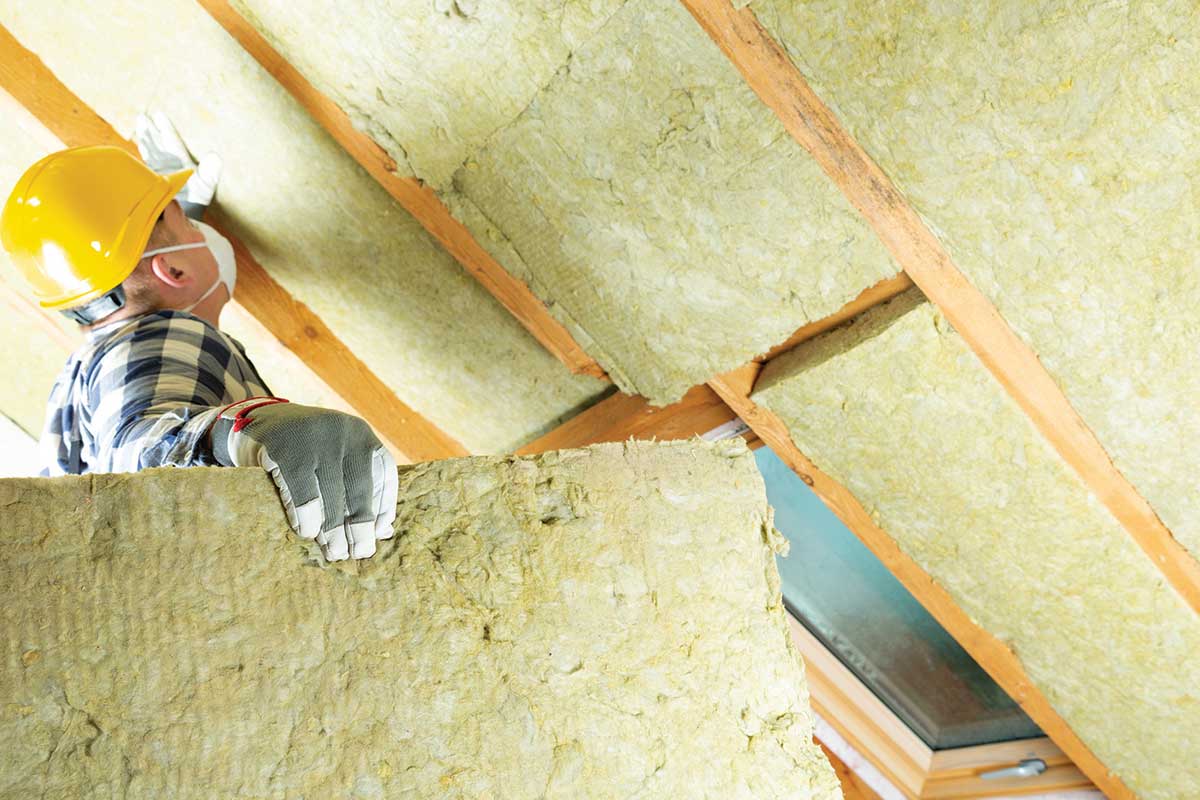When your home isn’t properly sealed and insulated, hot and cold air sneak in and escape, making your air conditioning system work harder and your home less comfortable. Sealing and insulating your home sufficiently can cut your heating and cooling costs by an average of 15%, and sometimes much more—all while making your home more comfortable.
Your attic is one of the first places you should consider insulating since it’s usually accessible and easy to inspect for air leaks and insulation levels. Most homes don’t have enough attic insulation.
Insulation is graded by its R-value—the higher the R-value, the greater the insulating power. If you live in a mild climate, your attic should have a minimum grade of R-38, or about 13–14 inches of insulation. If you live in a colder climate, R-49 is the minimum recommendation, or about 16–18 inches of insulation.
How can you tell if your attic is lacking in insulation? As a general rule, if you go into your attic and can see the ceiling joists on the attic floor, there isn’t enough insulation.
Once you’ve determined that you need more insulation in your attic, there are a few things you can do before laying down additional insulation:
- If you currently store items like holiday decorations in your attic, consider another suitable storage location in your home. If you must use your attic for storage, build a platform high enough to allow installation of the recommended level of insulation.
- If you live in an older home, you should check your attic’s electric wiring. Is the insulation around the wires degrading? If so, you’ll likely need to replace the wiring before proceeding.
- You will then need to decide who will do the insulation work. If a DIY project interests you, you’ll need to do some homework. Installing insulation is messy, potentially dangerous and requires special equipment. Fortunately, there are many experienced insulation contractors. You should discuss a few things with a contractor before you agree to hire them:
- Be sure that you or your contractor seals any air leaks, such as around furnace flues and around any exposed air ducts in the attic.
- Pay particular attention to your attic door or hatch. This entry point is a significant contributor to heat loss and heat gain in the home.
- If you have existing attic insulation, it’s usually not necessary to remove it unless it’s wet, moldy or contains animal waste.
- Make sure there’s sufficient ventilation in the attic. Warmth and moisture can build up in an improperly ventilated attic, which can lead to roof problems.
There are two types of insulation that you can place on your attic floor: batt/roll or blown-in/loose fill. Blown-in insulation requires special equipment to install, but it fills the space better than batt insulation. Batt insulation can leave gaps and voids without careful cutting and placement around ceiling joists, vents and other attic impediments.
Insulation is most commonly made from fiberglass, cellulose or mineral wool. Many energy experts recommend blown-in cellulose insulation due to its superior coverage, high R-value and air sealing abilities. Also, blown-in cellulose insulation is treated with boric acid, which acts as a fire retardant and insect repellent.


